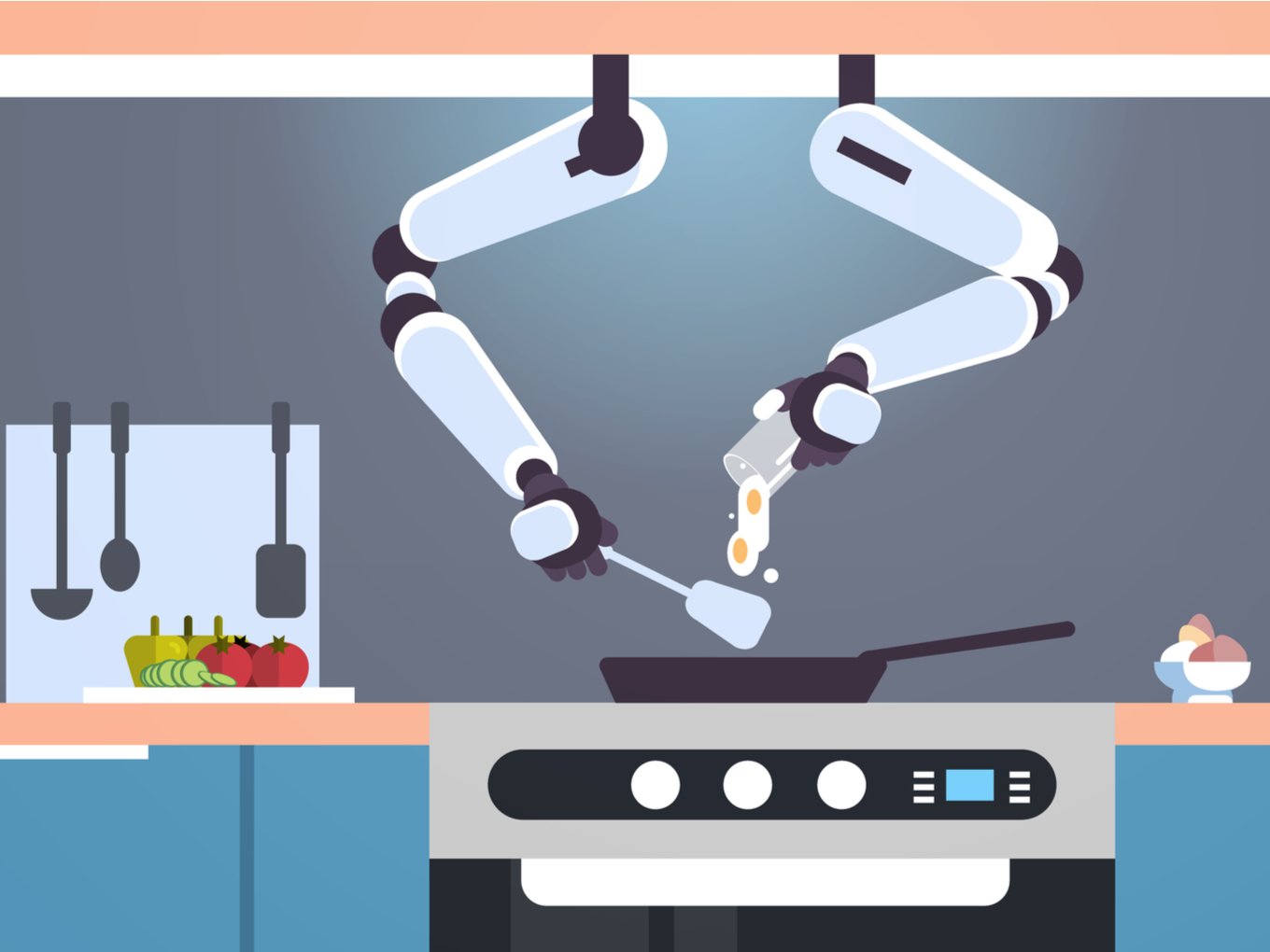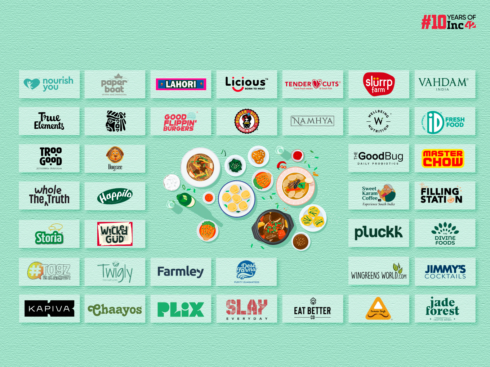
SUMMARY
Given the low barriers to entry, virtual food brands would need to develop a model that is a function of consistency and creativity, while intertwining the cultural cravings of the local palate with global experiences
As on December 2020, 12% of all foodtech investments globally were routed towards home-grown brands in India
Bengaluru-based company Mukunda Foods and Chennai-based startup RoboChef have already been leading the way in kitchen robotics
With Covid pushing cloud kitchens and QSR as a format, the culinary experience is undergoing a major shift not only for the consumers but also for how Internet food brands operate and actually prepare your food. While hygiene has become a sufficient condition to try new places, the two T’s — taste and ticket size (average price per order) still remain the two important factors that help in ensuring a customer’s repeat rate at a particular eatery is high.
While the industry is trying to adapt to these operational changes, the restaurant industry is on the verge of silently updating itself (by marrying itself with technology). And the credit for this goes to the Covid pandemic. This might feel like the “Robos” are invading the kitchen, but rather the shift towards kitchen robots in commercial kitchens across all formats (fine-dine, cloud and QSR and cafes) is likely to be a visible trend going forward globally.
Currently, China is leading the way if we look at the sales value of new robot installations in the food and beverage industry as a metric. The ability to eliminate significant employee cost (and thereby optimize EBITDA) and to provide strategic solutions to ensure there is minimal human contact with the cooked food are two factors that, I believe, will drive the increased adoption of kitchen robots globally over the next five to seven years. Moreover, the probability of new pandemics driven by new pathogens are expected to ensure that hygiene is engrained in the consumers DNA for some time to come – thereby ensuring that food-tech brands that adapt to technology early-on will have the ability to squeeze maximum alpha before this space becomes crowded.
Given the low barriers to entry, virtual food brands would need to develop a model that is a function of consistency and creativity, while intertwining the cultural cravings of the local palate with global experiences that an aspirational Indian longs for. From an Indian perspective, this fusion might give mini panic attacks to food connoisseurs, but this Indianisation of global palates and the introduction of regional cuisines (like Pahari, Sindhi, Goan, Chettinad cuisine, etc) to metro audiences (that constitutes a significant percent of India) is a twin-fold strategy that will not only help virtual brands target the mass-premium segment but will also help them in adding an additional source of revenue (introducing regional cuisines will assist in this) to their P&L.
Furthermore, given these brands will be built on a digital architecture and would be rooted in data they would have the ability use sales data (the ability to use data analytics to map which geography or locality prefers particular items) to ensure inventory efficiency (kitchens catering to different localities would stock those items that are fast-moving to ensure freshness) while giving the food brand headroom to continuously innovate. This continuous innovation in online food brands will allow chefs to experiment with new sub-categories of their minimum viable product (MVP). If their evolving MVP achieves sufficient traction, its preparation can be coded into bots so that chefs can focus on adding emotions to food rather than just ensuring a larger quantity is shipped out.
Nitin Datwani of Fat Lulu’s says, “While robots and increased technology will play a bigger role in the times to come in the kitchen area for QSR segment where the menus are compact and items are standardised, but for QSR’s offering pizza’s and pastas the role of chefs will still continue to play an important role even in the future. But technology is evolving so fast that one day maybe we could see a robot making pizza bases.”
You might think that while this might work globally (Singapore-based Zimplistic launched Rotimatic – a flatbread making robot – in 2016, Miso Robotics’ kitchen robot Flippy and Spyce, the Boston based robo-centric restaurant have both demonstrated their use case since 2018 and South Korea’s Dal.komm robot barista has shown how a robot can prepare fresh coffee), it might not fly in the Indian market where labour cost continues to be relatively less expensive and virtual brands are hesitant to invest in technology early-on.
However, if one would scratch the surface a little further one would find that virtual food brands in India have started to use technology to reduce cost, ensure consistency in taste, bring down the average price on their menus, and reduce their turn-around-time to deliver orders. Bengaluru-based kitchen robotics company Mukunda Foods and Chennai-based startup RoboChef have already been leading the way in food-tech in India since in 2012 and 2017, respectively. While the former has played a crucial role in assisting the automation of kitchens, the latter has been shipping food from its fully automated kitchens since its launch in 2017.
Furthermore, I believe this adoption of technology and robots in virtual food brands and restaurants should not be curtailed due to the lack of sufficient capital or the inability of promoters to invest a significant one-time capital expenditure that the setting up of such robotic infrastructure requires. What should be even more encouraging for restaurateurs is that as on December 2020, 12% of all food-tech investments globally were routed towards home-grown brands in India. Hence, food brands should bring on board tech-driven investors and early-stage advisors who understand the value such technology and can help them in achieving a positive unit economics profile along with ensuring scale is achieved.
Rajnish Kapur, managing partner, IAN Fund, says ”Restaurantears and investors will have to keep an eye on the RoI beyond the novelty of the application of robots. The economics of usage of robotics works better in high volume and repetitive tasks scenarios. Robot manufacturers will need to innovate to keep the cost and maintenance in line with the unit economics and the RoI expectations of the businesses they serve; cost of robots tend to be inversely proportional to the volume, thus the challenge is how the balance gets addressed between the restaurant owners and the robotic equipment makers. Maybe new business models like robot leasing will evolve and / or NBFCs and SME lenders will play a role to catalyse.”
While this is a sunrise sector for now, I believe it will witness increased traction over the next five year followed by a hockey-stick growth in 2026. First in commercial kitchens, followed by retail use. The network effect will kick in the fifth year from now when collaborative robots for the kitchen, robotic kitchen units or a robo-chef will either be retrofitted in higher middle income homes (time-poverty of working couples and millennials with ensure sustained demand) across the top 20 cities in India or will come installed in all high-end apartments in metros by 2026.
However, I also feel the application of kitchen robots and robotic bartenders in fine-dine restaurants in the medium term (24-36 months) will not only help in bringing back customers – along with ensuring hygiene is maintained — but will also help them in fulfilling their desires to be served Instagramable-worthy unique meals that are more of an experience rather than just a meal. This tech-enablement will help premium restaurants to retain their customers, if not consolidate market share in an otherwise highly segmented market. These technology-enabled experiences clubbed with unique recipes will have a significant bearing in attracting the millennial audience to dine-out. This union of technology and recipes highlights how the balance between robots and chefs will be crucial for restaurants and online food brands to ensure innovation and scale go hand-in-hand.


























